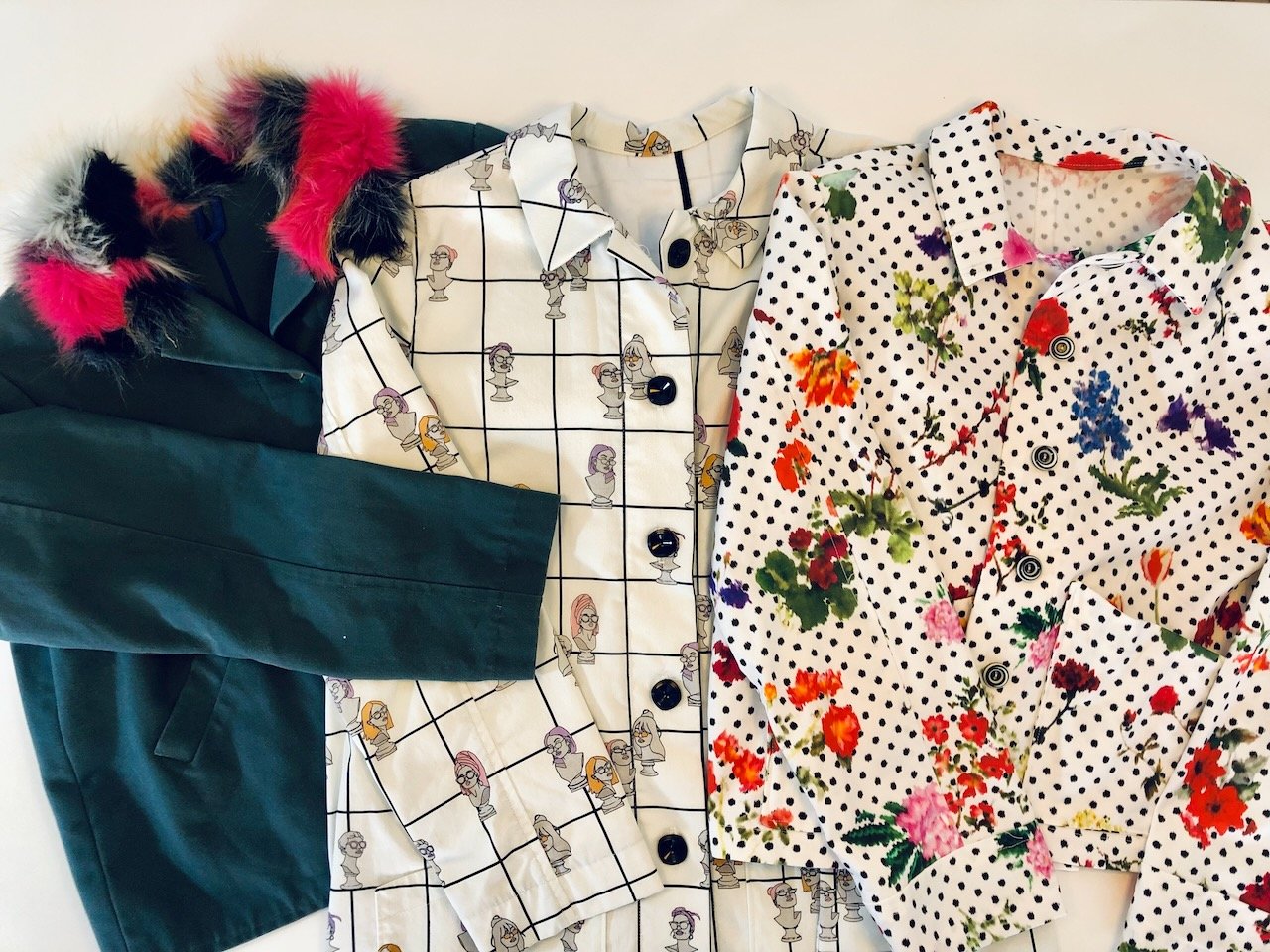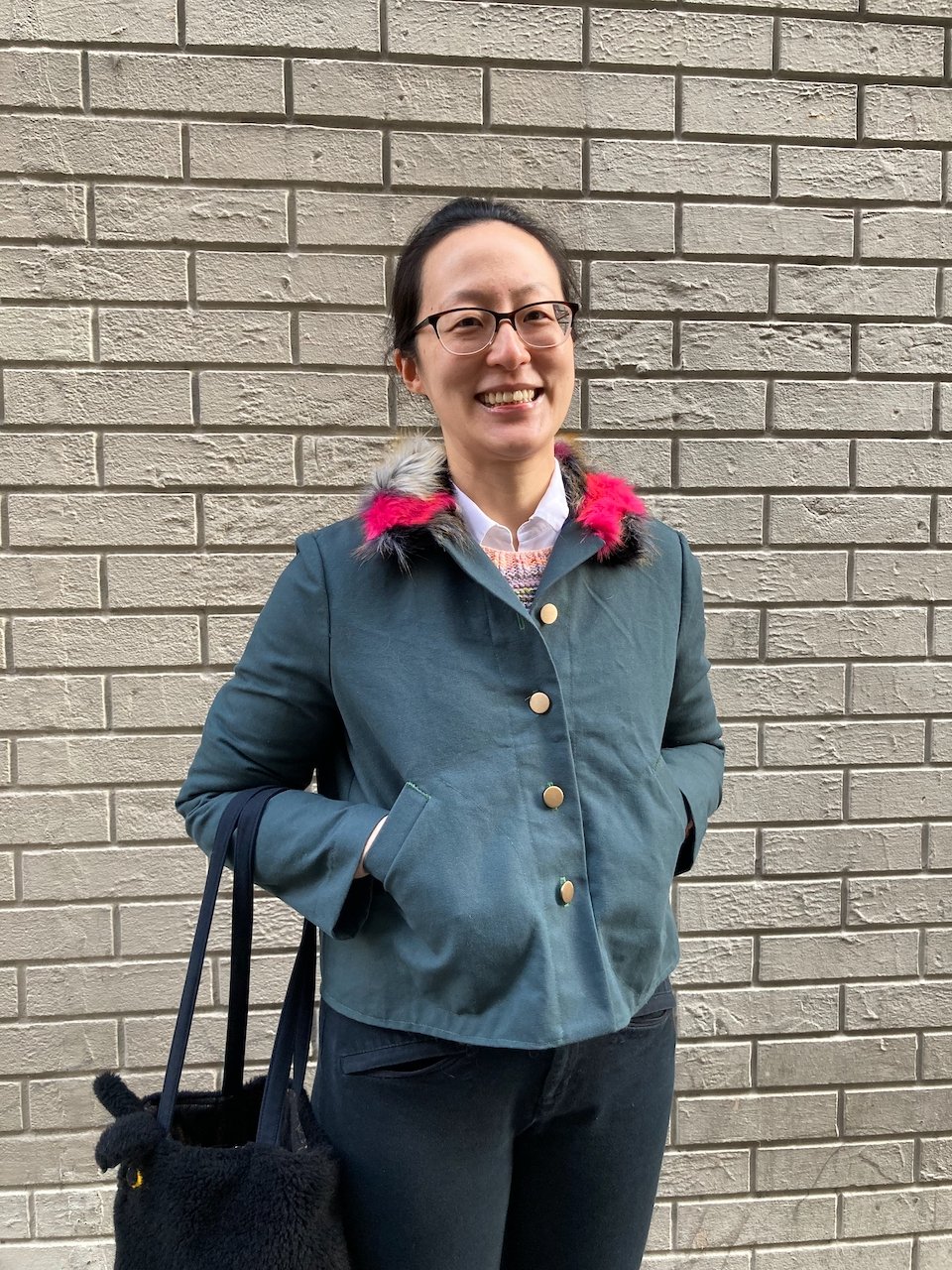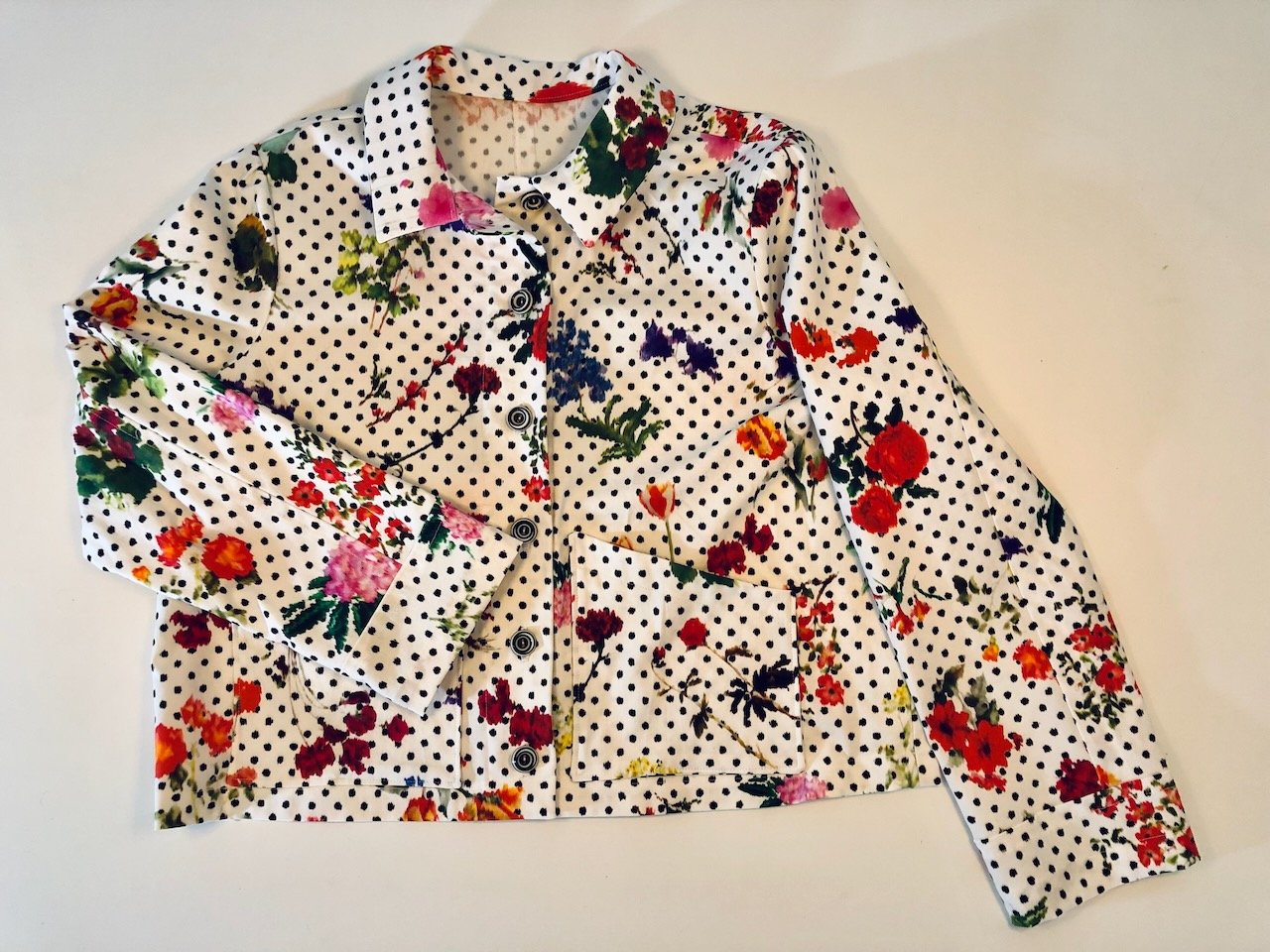Seamwork Rhett
The Seamwork Rhett is one of my favorite sewing patterns. A boxy, unlined jacket with a two part sleeve, it has been a go-to pattern of mine to showcase special fabrics or experiment with pattern hacking. Let me show you some of the Rhett jackets I have made, and tell you about the ones I plan to make soon.
When I first saw the Seamwork Rhett jacket sewing project, I was excited that it could be paired with many different outfit combinations. As a light outerwear layer, I could imagine wearing this jacket in the spring or early fall, or casually carrying it during summer to wear in cool air conditioned spaces, or donning it as part of a multilayered winter ensemble. The sample photo on the Seamwork website shows the jacket sewn in a dark denim, and I think this could be the perfect background for decorating with pins and patches.
Elongated Rhett
For my first Seamwork Rhett, I lengthened the pattern by about 13” to create a coat length jacket. I thought I had found the perfect fabric online - a white gridded pattern with printed faces - but when the fabric arrived, I found it was too lightweight for the jacket I wanted to make. I used white cotton lawn to underline all of the jacket pieces and I used a Hong Kong seam finish for neat seams. I also added a kick pleat to the back of the coat. The end product is one of my favorite outerwear makes, and I usually reach for this coat in the spring.
Pattern Modifications:
add 13” length
add kick pleat to the back
Fun Fur Collar Rhett
I had an odd, L-shaped piece of canvas fabric laying at the bottom of my fabric bin, leftover from another project. I decided to make a Rhett jacket from this scrap, though I had to shorten the length of the jacket by a couple of inches to fit all the pattern pieces in. For the collar, I used some colorful fun fur that I bought as a souvenir when I visited the garment district in Los Angeles. I also swapped out the patch pockets for welt pockets, to elevate the look. This jacket pairs really well with a beaded sweater that I knit that has a cheese-grater like texture. Because the jacket is unlined, I don’t worry about the beads on the sweater chewing up the coat lining of my other handmade coats.
Pattern Modifications:
remove 2” length and omit 2 buttons
replace patch pockets with welt pockets
Reworked Rhett
Trying to fit all of the Rhett pattern pieces into the scrap of green canvas made me realize that the Rhett pattern is great for odd shaped pieces of fabric. The fact that the sleeve is split into two pieces helped me fit the pattern pieces into a narrow length of fabric, and I didn’t notice any issues when I cut the collar off grain. This was a good practice round for the next Rhett jacket that I made, which was cut out from pieces of an unfinished dress.
I started sewing a dress about 5 years ago, when I was eagerly trying to expand my skills from a beginner to a more intermediate level. I found this Oscar de la Renta printed fabric at the NYC Mood in my favorite section, the designer cotton blend shelf downstairs. I loved the print when I saw it and decided to sew an A-line dress that was similar to what was shown on the runway.
Too far into the sewing process I realized that the fabric - a mid weight cotton poplin- did not have the same drape as the fabric on the runway dress. Also, I had some bodice fitting challenges that I couldn’t resolve, even when I tried to recut the entire top of the dress out of my remaining fabric. Very disappointed, I never finished sewing this dress but I held onto the unfinished project pieces.
This past summer I listened to one of the Seamwork Radio questions “What is your oldest work in progress” which made me think of my abandoned dress project. The original dress pattern was no longer a style that I was interested in wearing, but I could try to make a Rhett jacket from the pieces. I spent a day ripping out all of the dress seams and ironing all the pieces flat, and then I laid everything out on the floor to see what pieces of fabric I could work with.
I split the largest pattern pieces of the Rhett jacket into smaller components that could fit onto my fabric. For example, I added a center seam down the back of the jacket, as well as a back yoke seam. The sleeves I also split into smaller pieces by adding a seam near the wrist for a faux cuff look. I traced all of my new pattern pieces on new paper and laid them out carefully to make sure everything fit before cutting.
Pattern Modifications:
add back shoulder yoke and center back seam
add seam at sleeve cuff
separated jacket facing pattern piece from front
To finish it off, I found the perfect black and white swirly buttons in my vintage button stash. The final jacket is something I am looking forward to wearing in the spring!
Next Up
The Rhett jacket pattern has become one of my go-to patterns, just like the Seamwork Rachel shirt pattern that I have written about. I’m starting to think about what I want to sew in 2024, within the larger goal of sewing with some of my vintage fabric stash. On my list is to make a lined Rhett jacket with some of my vintage coating fabric and making the Rhett out of a mid-weight shirt fabric. It has been a versatile pattern to hack into many different wardrobe staples.








